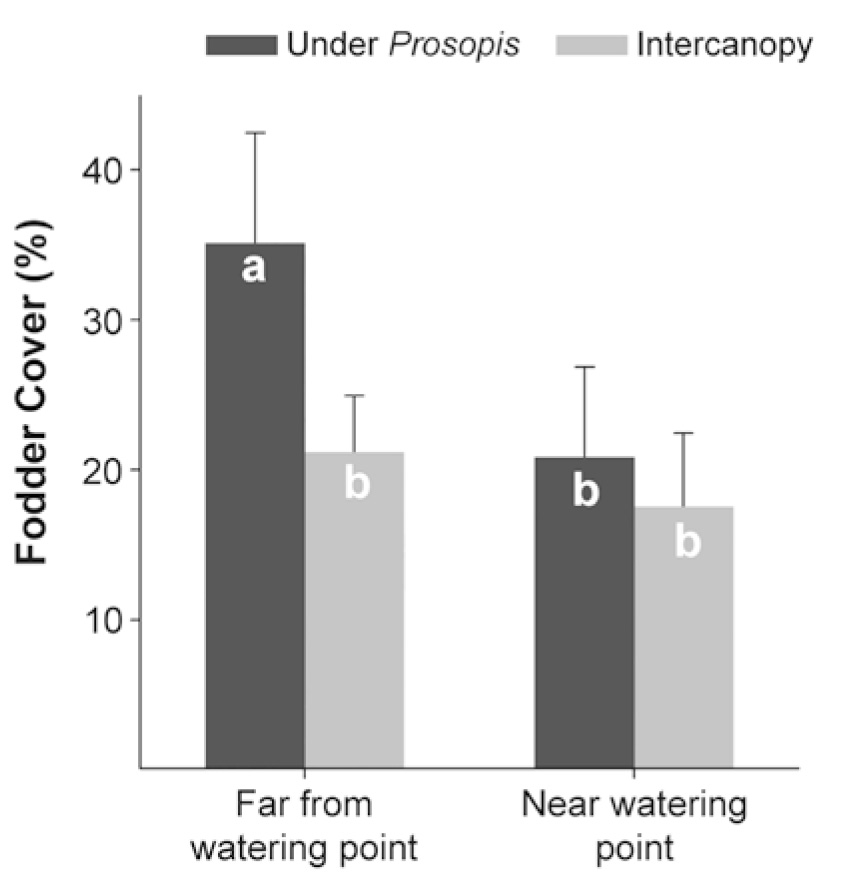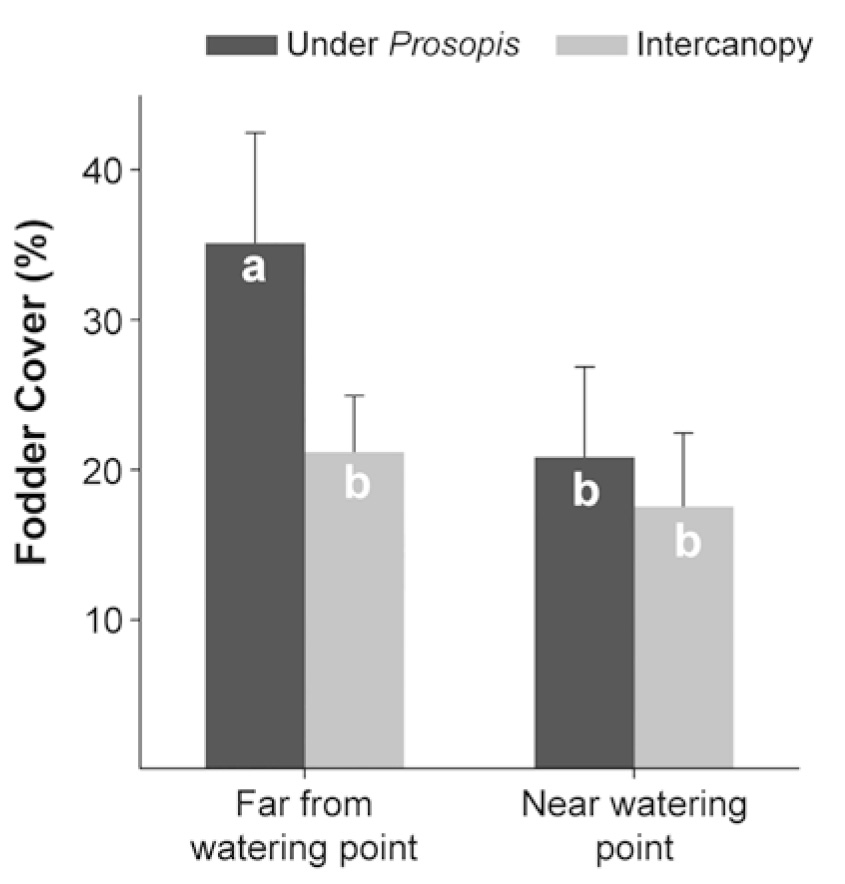Effect of Prosopis flexuosa on understory species and its importance to pastoral management in woodlands of the Central Monte Desert
Keywords:
spatial heterogeneity, patchiness, facilitation, distance from watering points, forage availabilityAbstract

In the Monte Biogeographic Province, located in the arid region of Argentina, the presence of Prosopis flexuosa DC. produces spatial heterogeneity through edaphic modifications and microclimate changes. This results in vegetation patches differing in species composition and abundance. However, this interaction can be modified by the occurrence of gradients of biotic stress or disturbance intensity. In particular, grazing has been observed to enhance or reduce vegetation heterogeneity. Such complex of interactions could determine forage availability for cattle in one of the driest areas of the Monte Desert. We assessed the effect of Prosopis on understory species and analyzed whether the outcomes of this interaction differed with distance to watering points, as a proxy of grazing intensity, in the Northeast of Mendoza Province, Argentina. We used a two-way factorial design including the following factors: 1) microsite (under the cover of P. flexuosa trees and in intercanopy microsites) and 2) distance to watering points ("near the watering point", 500-700 m away, and "far from the watering point", 3-4 km away). Cover of each species, total cover, bare soil, and litter were recorded, and plant diversity, richness, and evenness were estimated with the modified Point Quadrat method. Results showed that P. flexuosa cover, distance from watering points, and the interaction between them determined species composition, abundance and spatial distribution of understory species, and were, consequently, a determining factor for forage availability. The presence of P. flexuosa enhances carrying capacity by supporting higher abundance of grasses under its canopy. Near watering points, high grazing intensity appears to disrupt the patches formed under P. flexuosa canopies, reducing the differences between microsites.
Downloads

Downloads
Published
How to Cite
Issue
Section
License

This work is licensed under a Creative Commons Attribution-NonCommercial-ShareAlike 3.0 Unported License.
Aquellos autores/as que tengan publicaciones con esta revista, aceptan las Políticas Editoriales.










.jpg)




